Cherry refers to fruit trees that tolerate negative temperatures well. Even a harsh winter tree can endure without significant losses.
But for the formation of a large number of berries for the next year, all the procedures for caring for cherries from autumn are sure to be performed. It is important to feed, cut and water the tree on time, spray from pests and protect from diseases.
Content
The Importance of Autumn Care
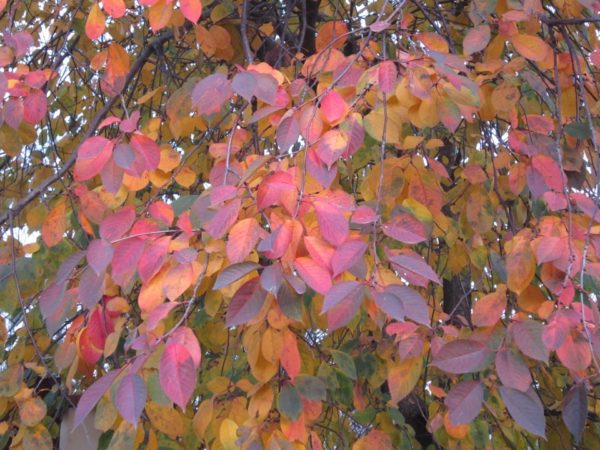 By the end of the growing season, the growth of cherry branches stops. The tree enters the dormant stage and prepares for the coming spring. At this moment, the flower buds are laid and the branches and trunk are lignified. In autumn, cherries need minerals and water-charging irrigation. This makes it possible to stock up on nutrients in order to leave the resting stage without stress in spring.
By the end of the growing season, the growth of cherry branches stops. The tree enters the dormant stage and prepares for the coming spring. At this moment, the flower buds are laid and the branches and trunk are lignified. In autumn, cherries need minerals and water-charging irrigation. This makes it possible to stock up on nutrients in order to leave the resting stage without stress in spring.
In winter, the danger of defeating a cherry tree with fungal diseases is great. Their spores fall on the plant in the fall, and with the onset of warm weather begin rapid reproduction. Therefore, it is important to treat the periostemal circle and the plant itself with fungicides in time.
You can not ignore the risk of infection with pests, which by the fall become especially numerous. Insects are able to move from a neighboring garden and lay eggs for breeding. Therefore, activities to prepare cherries for winter include inspection of the tree and spraying with insecticides.
In winter, rodents, squally winds, frosts and rainfall that can damage the crown pose a threat to cherries. This complicates the growth of shoots and prevents active sap flow. Therefore, the yield of damaged cherries is significantly reduced. To prevent breakage of branches, the tree is covered before winter.
Autumn pruning
Many gardeners are convinced that trimming is not required for stone fruit crops, but this opinion is erroneous. Cutting shoots in the fall greatly increases the number of berries and improves their taste. If you abandon this event, the crown thickens, but the abundance of the crop decreases.
Trimming time and time
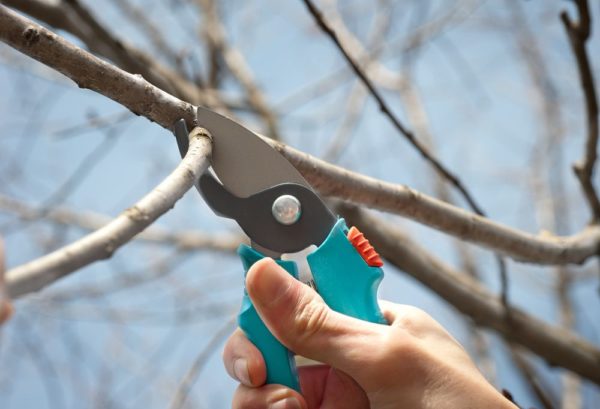 Remove unnecessary shoots on the cherry is allowed in spring or autumn. In this matter, much is determined by the purpose of cropping:
Remove unnecessary shoots on the cherry is allowed in spring or autumn. In this matter, much is determined by the purpose of cropping:
- so that the garden has a well-groomed appearance, and the crowns of fruit crops are formed correctly, pruning is done in the fall;
- In the spring, the procedure is repeated, but only those branches that are affected by frost are cut.
Exact dates when fall should be cut cherry, does not exist. Experienced gardeners are advised to perform this procedure from mid-September. The deadline is mid-December.
Proper execution of the procedure
For a tree, pruning is a kind of surgical operation. Therefore, it is important to carry out the procedure taking into account all the rules in order to qualitatively prepare the cherry for the winter:
- It is allowed to carry out the procedure when the plant is at a dormant stage. Therefore, pruning is performed after the cherry drops all the leaves.
- Diseased and dry branches are removed. To prevent the spread of the disease again, all fallen leaves and cut shoots are destroyed.
- If the crown is too thickened, pruning is done in parts for several years. Simultaneous removal of excess shoots leads to the death of the plant.
Features of the procedure depending on the age of the tree
A tool for cutting branches is chosen, starting from the age of the cherry. The branches of young trees can be easily cut with a sharpened knife. If the cherry is old, it is more convenient to work with a garden pruner or cut down the shoots with a hand saw.
A young plant is not cut every year in the fall. For this, the main branches are left on the trunk, and all excess shoots are cut off. Seedlings over two years old are pruned by shortening. To do this, the central branch is cut by 25 cm, and the side branches are shortened by 35 cm.
Features of cropping depending on the type
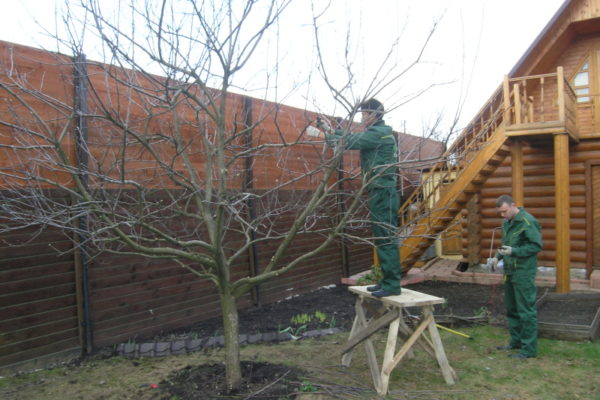 When pruning cherries, take into account not only the age of the plant, but also species features:
When pruning cherries, take into account not only the age of the plant, but also species features:
- for pruning a tree cherry use the standard method;
- it is easier to cut felt cherries in the fall by shortening;
- for bush varieties, pruning thinning crown is used.
To avoid possible thickening, the pruning process eliminates the branches growing inside the crown. Broken and diseased shoots are also removed. It is recommended to complete the procedure before severe frosts. Otherwise, plant survival in winter will decrease significantly.
Autumn care for laying a good harvest
Although cherries tolerate drought and the effects of low temperatures, it still needs care and quality preparation for the winter. In summer, the plant needs protection from diseases and pests. In drought, the tree needs to be watered and necessarily fed with fertilizers. With proper care for the cherries in autumn, the tree pleases with abundant flowering and gives a high yield.
Digging soil
In autumn, the soil in the near-stem circle must be dug up to a depth of 15 cm. It is not necessary to dig deeper, so as not to harm the roots of the plant. Finish processing the near-stem circle by loosening the soil with a rake. Part of the roots of weeds found during digging must be removed.
Watering
Immediately after digging and loosening the soil, the cherry is abundantly watered. Thanks to a peculiar preparation before moistening, water penetrates deep into the soil and does not freeze longer. To ensure that watering is of high quality and water penetrates to a great depth, at least two buckets are poured under each tree. At the same time, water should be used a little warmer than ambient air on the day of irrigation. To reduce water consumption and prevent its spreading over the site, the trunk circle is limited by a trench 10 cm deep.
Top dressing
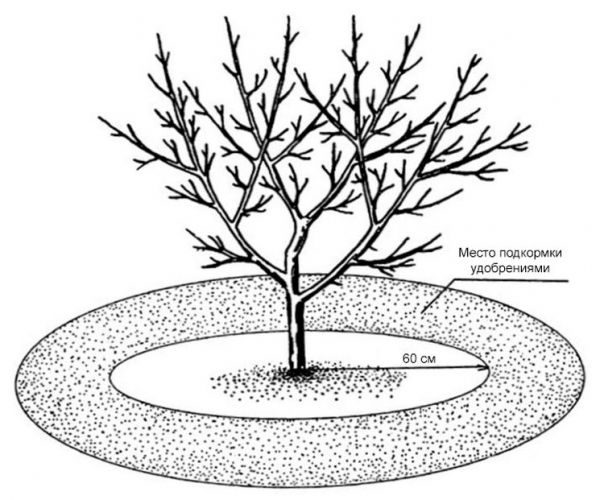 It is advisable to water with fertilizer. This will help nutrients quickly penetrate the roots of the tree. It is recommended to feed the cherries in autumn in the first days of September, until the plant has time to go to the dormant stage. This will make it possible to assimilate the fertilizer immediately, and not wait for the onset spring.
It is advisable to water with fertilizer. This will help nutrients quickly penetrate the roots of the tree. It is recommended to feed the cherries in autumn in the first days of September, until the plant has time to go to the dormant stage. This will make it possible to assimilate the fertilizer immediately, and not wait for the onset spring.
You can fertilize cherries with compost. It is introduced in the following amounts:
- if the age of the tree does not exceed 7 years, 2 kg is applied for each square meter of the near-trunk circle of soil;
- for older trees, the amount of compost is increased to 3 kg.
Mineral complexes with a predominance of potassium and phosphorus can be used as top dressing:
- it is enough for young trees to add 1 tbsp for each square meter of soil l potassium chloride and 2 tbsp. l superphosphate;
- fruiting plants this norm is increased by 1.5 times.
Disease prevention
The prophylactic treatment of cherries from diseases and pests in the fall begins with cleansing from the lichen, moss and departed bark.It is convenient to perform this procedure with a brush with metal bristles. Then, plant debris in the near-stem circle is collected and burned. Often during this, egg clutches of pests are found. They are also destroyed manually.
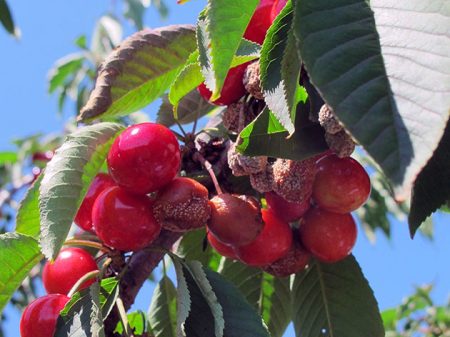 You may be interested in:
You may be interested in:With moderate infection of pest plants, cherries are treated with folk remedies:
- an ash-soap solution prepared from 10 l of water, 400 g of ash and 50 g of liquid soap;
- a solution of 50 g of birch tar and 10 l of water;
- infusion of 1 kg of pharmaceutical chamomile and 10 l of water.
If there are too many pests, the cherries are treated with the chemical insecticides Karbofos, Aktellik, or Bancol. As a prophylaxis, a plant is sprayed with Bordeaux liquid, using a solution concentration of 1%. For young trees, 2 l of solution is enough, and for fruit-bearing plants, the volume is increased to 10 l. At the same time, the trunk circle is also sprayed.
Warming and whitewashing of boles
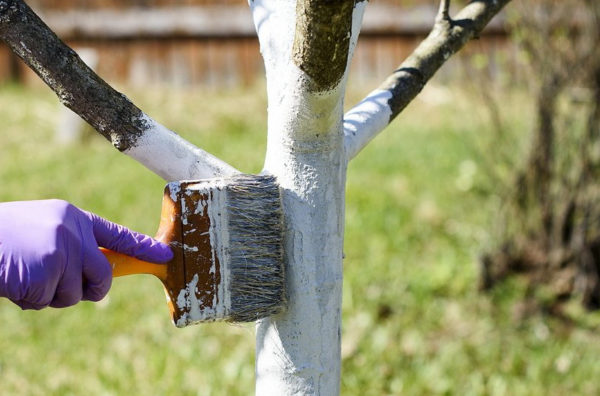 Since the climate in Russia is changeable, it is worth preserving the fruit tree from the vagaries of the weather in advance. After all, frosts that hit before the establishment of snow cover can destroy a young plant. Therefore, young cherries under four years of age are wrapped in sacks with burlap, old newspapers and tied over fir spruce branches. Before this, it is recommended to wrap the trunk at the base with plastic mesh to prevent damage by rodents.
Since the climate in Russia is changeable, it is worth preserving the fruit tree from the vagaries of the weather in advance. After all, frosts that hit before the establishment of snow cover can destroy a young plant. Therefore, young cherries under four years of age are wrapped in sacks with burlap, old newspapers and tied over fir spruce branches. Before this, it is recommended to wrap the trunk at the base with plastic mesh to prevent damage by rodents.
In adult trees, trunks are whitened for added protection. A whitewash layer will help protect the tree in the winter from too bright sun. If you add a little iron sulfate to the lime, then such a whitewash will scare off rodents. Trunks are treated with lime after the rainy season ends, so that the paint layer remains on the plant longer.
In spring, during flowering, flowers and ovaries are sometimes showered with cherries. This is due to the high acidity of the soil. Therefore, every 5 years it is recommended to apply calcareous fertilizers into the soil. They will help preserve the green part of the plant.
Shelter for the winter
Experienced gardeners advise not to rely on the winter hardiness of this crop and to cover the fruit tree for the winter in late autumn. This is especially recommended for young cherries. Usually trees are covered using mulch. Young plants are additionally tied with fir spruce branches. The mulch is placed so that it does not touch the trunk of the tree. Otherwise, during the thaw, the bark will reheat and rot will begin.
In this way, bush and felt cherries are covered before frosts. The tree-like form of the culture is additionally wrapped in light burlap, white paper or non-woven covering material. This precaution will protect the tree from mice and other rodents.
Features of preparing for cold weather by region
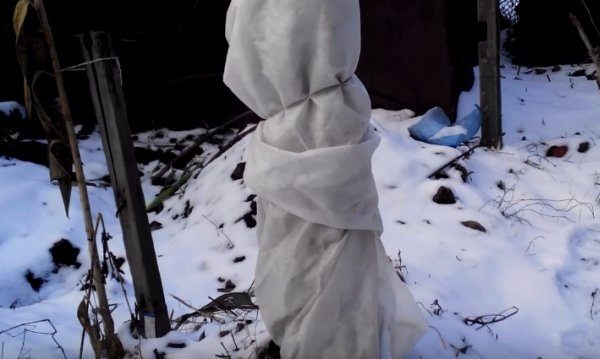 When conducting preparatory activities, it is important to care for cherries, taking into account the climatic characteristics of the region. If the tree grows in the Moscow Region or regions belonging to Central Russia, the preparation is carried out in accordance with the standard scheme.
When conducting preparatory activities, it is important to care for cherries, taking into account the climatic characteristics of the region. If the tree grows in the Moscow Region or regions belonging to Central Russia, the preparation is carried out in accordance with the standard scheme.
For fruit trees growing in Siberia or the Urals, more serious measures are needed:
- Cherry must be insulated. Young seedlings are especially carefully covered, as they are less resistant to low temperatures.
- Pruning is performed immediately after foliage flies around, and is completed until mid-September so that the wounds can heal. Severe frosts often occur later. Because of them, the plant can be severely affected.
Autumn transplant
If Cherry needs to be transplanted, this is done in the fall, since in spring the plant starts to grow early.
Step-by-step execution of work:
- Dig a circle in a circle, retreating from the barrel by 35 cm.
- The soil in the circle formed is watered abundantly.
- The main roots holding the plant are determined and filed.
- Cut the slices with a knife.
Then strong poles are planted under the liberated root system and a plant is pulled out with their help. It is recommended to immediately transplant it into a pre-prepared hole, the dimensions of which exceed the diameter of an earthen coma. At the same time, the roots are carefully straightened so that they do not bend up. They fill the pit, occasionally shaking the tree by the trunk to fill all the air voids.
An almost filled landing pit is well compacted, directing the force from the edge to the center. Then they fill up the remaining soil and water the transplanted plant abundantly.
Shoot removal
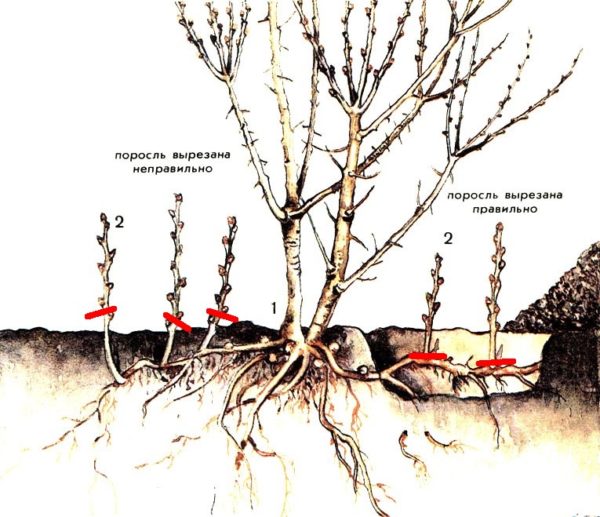 When maintenance work is not carried out at all or is carried out irregularly, many small shoots of cherries are formed near the mother plant. It draws on its development nutrients from the soil and root system of the plant. This leads to a decrease in productivity and affects the quality of berries. Therefore, young shoots uproot.
When maintenance work is not carried out at all or is carried out irregularly, many small shoots of cherries are formed near the mother plant. It draws on its development nutrients from the soil and root system of the plant. This leads to a decrease in productivity and affects the quality of berries. Therefore, young shoots uproot.
The only effective method to get rid of the shoot is to remove it manually:
- Shoots uproot as soon as they appear on the surface.
- Shallow holes are made around the roots of the mother plant and the shoots emanating from them are cut off.
- The resulting wounds are poured with garden var.
A sharp knife is used to cut the shoots. In this case, after removal of the shoots, there should be no stumps, since new branches grow very quickly from them.
Prevention
To prevent excessive growth of overgrown, constantly monitor the condition of the trunk circle. All fallen berries and seeds are collected. Otherwise, having wintered, they will sprout with the onset of spring. Well spared the young shoots growing in the vicinity of a cherry spreading tree. But in this case, the mother plant will also be deprived of light.
The choice of cherry varieties also affects the formation of shoots. Usually it is given by root crops. If the cherry is grown on a seed yard, it does not form root shoots.
Common mistakes
Many gardeners do not water cherries in the fall, believing that this is not necessary. In fact, the plant at this time needs frequent watering, especially for young seedlings. Adult fruiting trees are allowed to water less frequently, but more abundantly. After top dressing and digging around the trunk, the tree is watered for the last time. Then there is a slowdown in sap flow and the tree falls into a state of rest.
You can not trim by simply shortening the branches. Slices are recommended to be done, observing an angle of 40 degrees. In young seedlings, the top is necessarily shortened.
With the onset of autumn, we should not forget about weeding the weeds in the circumferential circle. Digging is also required to ensure that the quality of the crop for the next year is not affected.
Finally
Care for cherries should be throughout the growing season. But with the onset of autumn, care measures should not be stopped. If all the procedures are carried out correctly, the tree will be well prepared for the winter and will yield a plentiful harvest next year.

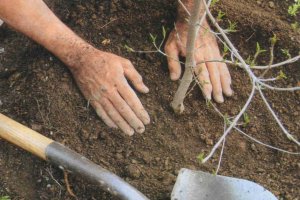 Autumn cherry transplant - important points step by step
Autumn cherry transplant - important points step by step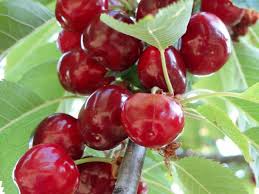 All about the Turgenevskaya cherry variety
All about the Turgenevskaya cherry variety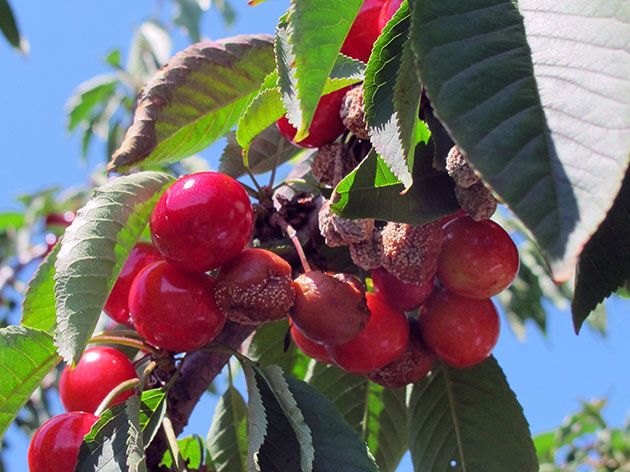 Cherry Disease: Description with Photos
Cherry Disease: Description with Photos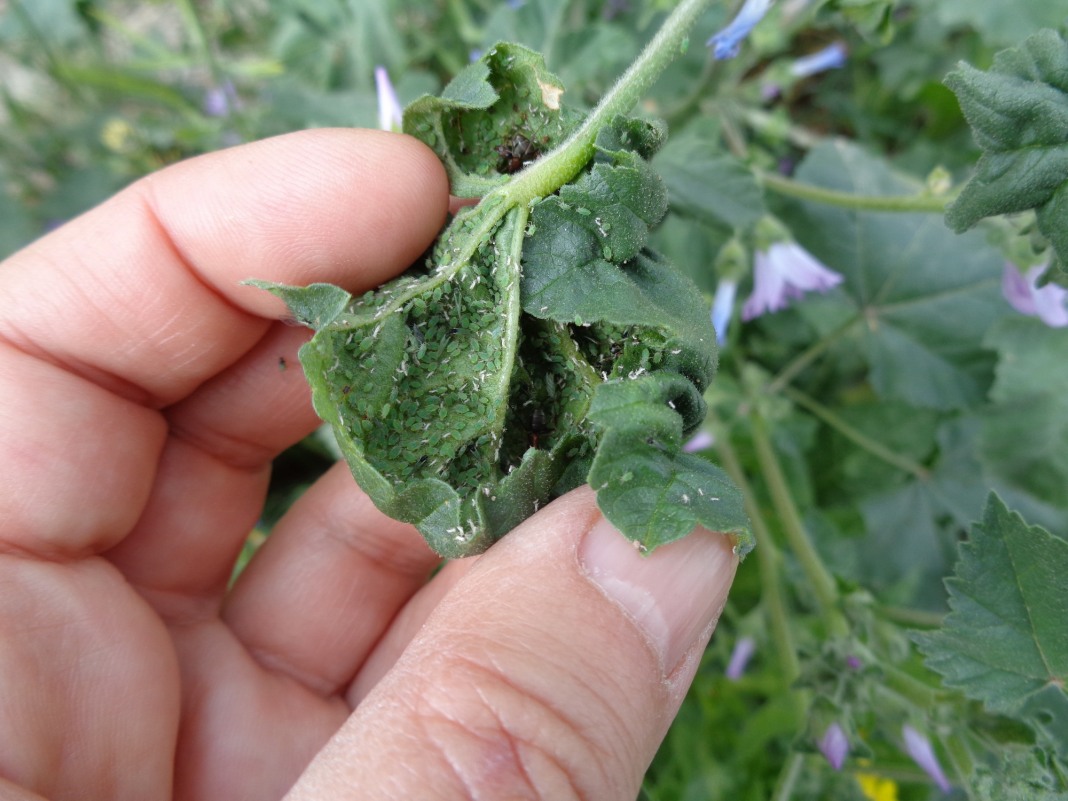 Ways to get rid of aphids on a cherry
Ways to get rid of aphids on a cherry